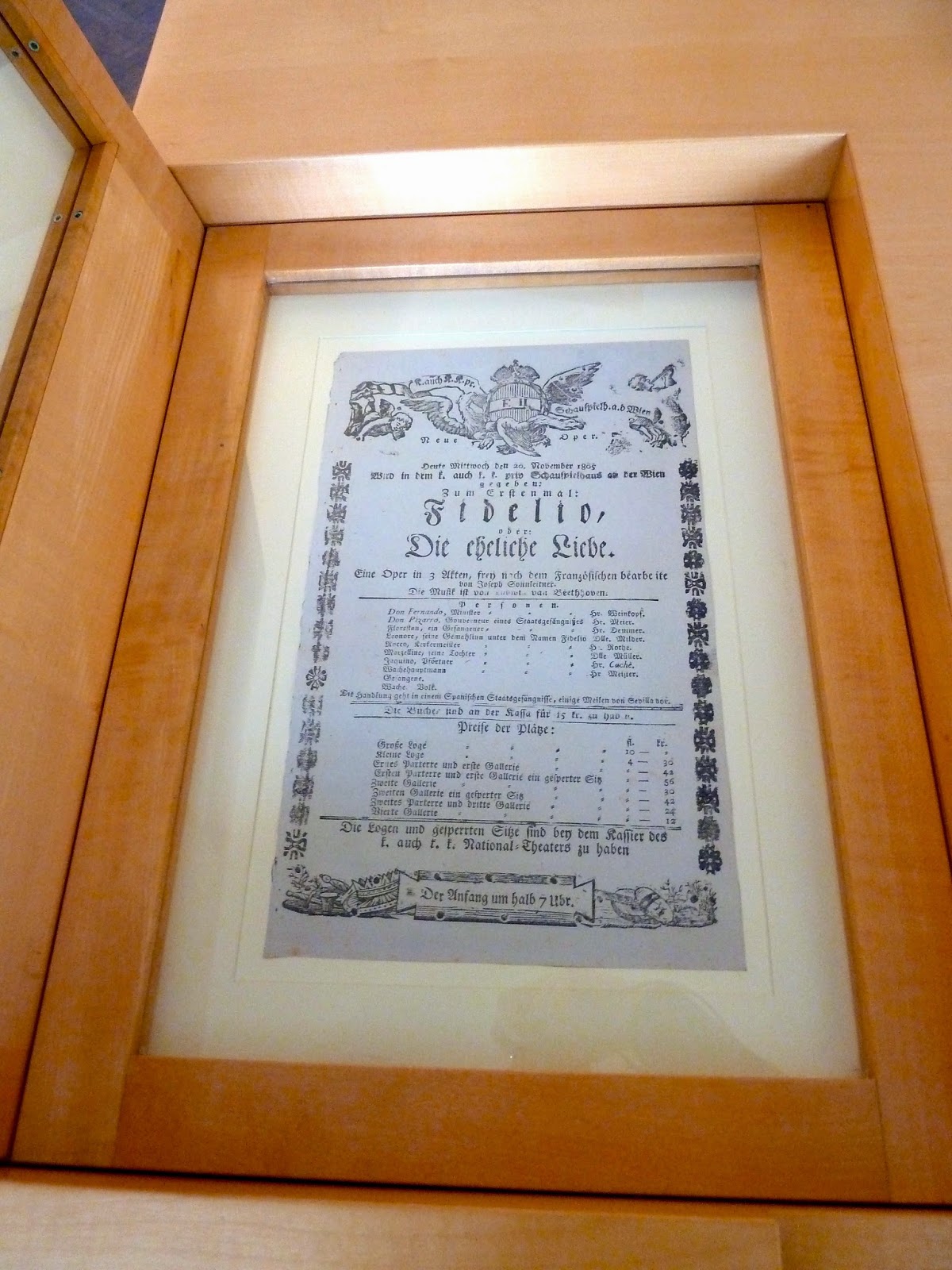On the first Sunday of every month, the historic sights
operated by Wein Museum are free to all visitors. Since I am basically a museum
junkie, this was good news to me. I wanted to learn more about Vienna's
musical history. It is "the world capital of music." So I decided to
visit the former homes of some famous composers.
My tour started at the Haydn house. Haydn spent the last
twelve years of his life in this charming house near what is now Westbahnof.
When he lived there it was the “outermost suburb” of Vienna, Windmühle. The
house featured a cute garden. It has been refurbished to reflect the typical
designs of gardens in the 1800’s.
Throughout the house were many of Haydn’s belongings, such
as his piano and original works he wrote. A few of his most famous works,
including “The Seasons” and “The Creation” were written here. These were
displayed alongside portraits and busts of the composer.
The museum also detailed what happened to Haydn’s estate
after his death. Since he had been such a well-know musician at the time, his
belongings were very valuable. His African Grey Parrot was auctioned off as an
art piece for almost twice what he paid for it. The truly remarkable thing is,
that same parrot is alive today in the Schönbrunn zoo.
Next stop was Beethoven Pasqualatihaus, an apartment
directly across from the University of Vienna. You have to walk up a hill to
get there though, because it is perched on top of the Mölker Bastei, the old city
fortifications. Beethoven lived and worked in an apartment on the fourth floor
for eight years. It was here that he wrote his 4th, 5th,
7th, and 8th symphonies, as well as his only opera, Fidelio. Similar to the Haydn house, the
sparsely furnished apartment had been filled with memorabilia. Beethoven’s
piano was inside, along with original copies of his music, and many artistic
renderings of the composer.
There were also stations where you could listen to the
symphonies and opera written in that very apartment. I thought that was a nice
touch. It helped me to better understand the importance of the space. Especially
since I am not enough of a music buff to know what Beethoven’s 7th
symphony sounds like off the top of my head.
 |
| Beethoven's piano |
 |
| A symphony |
 |
| The libretto for Fidelio |
The Schubert Geburtshaus (Schubert’s birthplace) was
honestly a bit of a let down. It was farther from town than I had originally
anticipated. He was born on a residential street in the suburbs, without much
around. Inside you could see the family apartment where Schubert spent his
early years as one of 14 children. It was not the place where he grew up
though. His family moved when he was still relatively young. The most fascinating
exhibit were his eyeglasses. You could also listen to some of his music. I did
enjoy comparing and contrasting him with Beethoven.
 |
| Schubert's birthplace |
 |
 |
| The apartment with the listening station |
 |
| Some pictures of Schubert |
My last stop was Strauss’ apartment,
which wasn't far from the center of town and overlooked a busy street. It was
clear that Strauss enjoyed success as a composer. His apartment was the
most lavishly decorated. He lived there for seven years, during which time he
wrote “The Blue Danube Waltz,” Austria’s unofficial national anthem. Inside
visitors could see his piano, violin, and even a small organ. Since Strauss was
so well known, there was even a room full of cartoons in which he was featured.
Inside there was another station for listening to his compositions. I thought
his apartment had the most personality, and it was my favorite stop of the day.
 |
| All of the cartoons |
My whirlwind trip around town had taken me to some radically
different locations. From Beethoven’s tiny apartment on the hill to Strauss’
lavish city flat, to Haydn’s retired garden house, each one gave some insight
into the person who lived there. Unlike a grand palace, when visiting these
residences I wasn’t overwhelmed by the sheer beauty of anything. Strauss’ piano
was very similar in appearance to Beethoven’s, but the hands that touched them
were so different. Here, what was overwhelming was the spirit of those who had lived
there before. It was a very immersive way to learn a little more about music
history.
Since listening to the music composed by these men at all the
locations (except the Haydn house, but I may have not known what to look for)
added so much to my experience, I thought I would make a Spotify playlist to go
with this post. So here you are. It includes selections from the works I
mentioned.












No comments:
Post a Comment